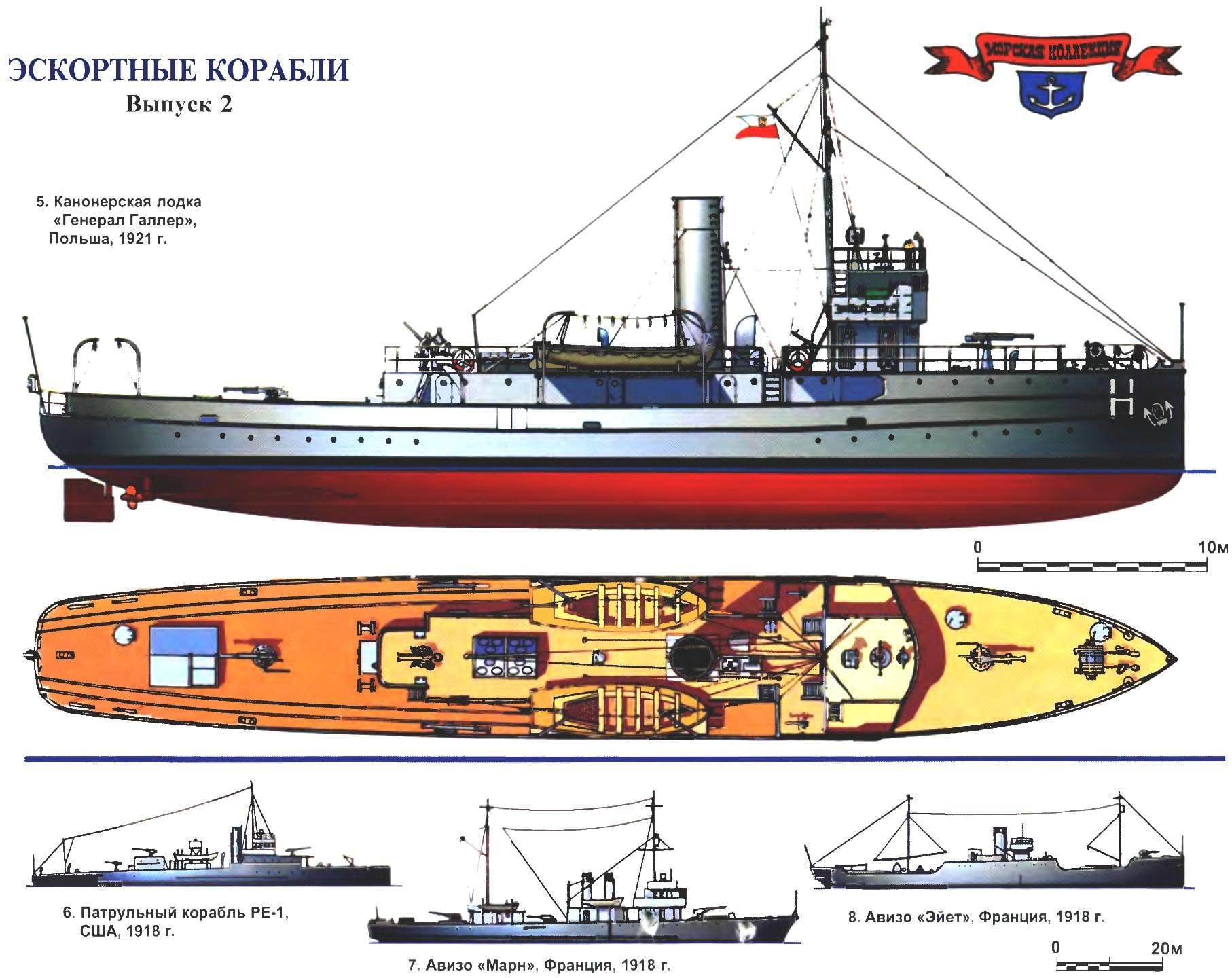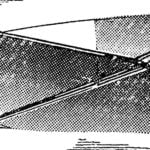 The United States waited almost three years before entered the First world war. And during this time the leadership of the naval Ministry was attentively get accustomed to all the innovations in the navies of the warring countries. Naturally, the greatest interest was aroused by the shipbuilding “mistress of the seas”. United States delegate to the London group of admirals and naval analysts led by Admiral Simms — they had to carefully study the successes and failures of their colleagues from the British Admiralty.
The United States waited almost three years before entered the First world war. And during this time the leadership of the naval Ministry was attentively get accustomed to all the innovations in the navies of the warring countries. Naturally, the greatest interest was aroused by the shipbuilding “mistress of the seas”. United States delegate to the London group of admirals and naval analysts led by Admiral Simms — they had to carefully study the successes and failures of their colleagues from the British Admiralty.
Did not go unnoticed and original in concept and execution English “PI-bots”. Sims and his staff knew that from the beginning of hostilities the United States had a long and unprotected coastline with a large number of major ports will be threatened actions of the German submarines in their own waters. Therefore, the British experience in anti-submarine warfare was of particular value.
This experience was saying that no matter how many built destroyers (and in the United States was founded hundreds of “flashdata”), they are still not enough for the needs of the fleet, and to patrol, to escort trade ships. The decision in exactly the same as the British: a specialized cheap patrol ship, the construction of which is not too impact on the program of construction of combat ships of the basic classes.
For the love of round numbers Americans called their project the “200-foot”, although the actual length of the patrol was slightly higher than this figure. With their inherent scale overseas admirals proposed for implementation of the program to build a brand new plant somewhere on the Great lakes or large river, for example, Mississippi or Missouri, away from the ocean. Naturally, security considerations played here last role — really the shipyards of the United States were never threatened. But the opportunity to join the marine orders of large “domestic” producers was a significant factor. And Kush looked tempting: the first order included the construction of 120 units at once.
Not surprisingly, the prize was taken by one of the most famous industrial tycoons automobile king Henry Ford. He really built a new plant near Detroit, ready to produce hundreds of patrol ships in a little more than six months.
It remained to develop the project itself. Fortunately, the chief designer of the British Navy, Stanley Goodall was brought to Washington a stack of drawings, ranging from the battle cruiser “hood” to support vessels. Among them were detailed specifications “PI-bot”.
As usual, immediately began an intense struggle between “tactics” and “builders”. The first wanted to have a 500-ton 20-usloviy a ship with a powerful armament, consisting of 127-mm guns and three-inch plank, two 57-millimetrovogo a number of mortars and release gear for depth charges. The designers promised a speed of two nodes smaller and only a few 76-mm guns, but one of which were anti-aircraft. Admirals immediately offered to add a few torpedo tubes on the model of a British prototype. The engineers demanded an extra hundred tons displacement.
Short but intense behind the scenes struggle took about two months. Insisted on strengthening the fighting qualities of future patrol vessels, the fleet management in the form of an advance gave them a proud name “the Eagle-bots” — something like “ship of eagles.” However, in the documents they received a more modest designation RE (patrol escort patrol escort).
In January 1918, there was a final draft, which, as expected, was a compromise between the demands of the warring parties. But with his realization of a problem. Although automotive Assembly methods and extremely simple lines, consisting of flat sheets with a minimum of bends, assumed quick construction “king pipeline” Ford had to know that the construction of the ships has its own specifics. Designers are expected to use in patrol, diesel engines, and the leadership of the company proposed steam turbine that, in principle, improved performance characteristics, but also slowed construction.
As a result, instead of the planned 112 units (hundreds of “friends” and dozens for the Italian Navy) plants avtomagnat had to be restricted to six dozen. The first of these, D-1, was put into operation at the end of October 1918, just days before the end of the First world war. Five units transferred to the coast guard, and the others followed straight to the reserve. “Eagle-bots” very unlucky: in the interwar period they had no use, and by the time of world war II, they were already too decrepit.
But very different was the fate of their peers — “birds”, which was built on the other side of the Atlantic. We are talking about the Russian patrol ships. During the First world war, the command of the Imperial Navy was also convinced that by mobilizing the civil courts cannot fully satisfy the many need of ships for patrol, messenger and escort service. Particularly clearly the problem manifested itself on the Baltic sea. The long Finnish coast, almost everywhere, representing the skerry areas with a huge number of islets, shoals and stretches, required constant supervision. That’s why Russian counterparts TFR were classified as ships-IAD — protection of water areas. In 1915, the Navy Department issued the first order for two 500-ton units. Not surprisingly, this order received the Finnish shipyard Sandvik in Helsingfors. The project, developed on the basis of the drawings towing artillery shields, did not differ the big complexity, and a small shipbuilding companies of Finland had spare capacity.
“Kite” and “the Falcon”, received in the course of construction of the status of the messengers of the courts, was supposed to equip a pair of 105-mm captured guns, taken from the German cruiser “Magdeburg” and 40-mm anti-aircraft machine gun “Vickers”. The armament was supplemented by a 70 mine — a respectable number for such a small ship, one that was, in fact, a coastal minelayer.
The firstborn of a new class of patrol had a long and complicated fate. After the entry into operation in 1916 they took part in the world war in 1917 was on the side of the Soviets, and then survived a severe transition in the ice from Helsingfors to Kronstadt. “Kite” even became part of the Bunker — a few of the Current squad of the Baltic fleet, consisting of the most suitable to the service of warships. After the overhaul, it was renamed “pioneer” and was part of different parts of the Baltic fleet. On 22 June 1941 it was included in the Skerry detachment, and in August of the same year, the former “Kite” sank after an attack by German aircraft near Leningrad. The story is not over: raised in 1943, one-hundred-ROI#)Vic received a major overhaul, re-enlisting into operation after the war. His service ended in 1957, 43 years after emplacement.

5. The gunboat “General Haller”, Poland, 1921
Founded in 1916 at the shipyard “Creighton” Or called “Valores”. The normal displacement of 350 m maximum Length of 50.1 m, width 6.9 m, draught 2.1 m. Capacity twin-shaft steam install 1150 HP, speed 15 knots. Armament (1939): two 75-mm guns, two 13.2-mm and two 7.7 mm machine gun, 30 min For the Polish Navy comprised two units: “Komendant Pilsudski and General Haller”. “General Haller” sunk by German aircraft on 6 September 1939 “Pilsudski” captured by the Germans, received the name of “Hinternet”, and then renamed M-3109. In September 1944, sunk by allied aircraft.
6. The patrol ship RE-1, USA, 1918
Built by Ford. The normal displacement of 500 tons, full 615 t Length overall 61.2 per m, width 10.1 m, draught-2.6 m. Capacity single-shaft steam turbine 2500 HP, speed 18 knots. Armament: two 102-mm and one 76-mm gun, one mortar. Only in 1918-1919 built 60 units (R-1 — R-60).
7. Aviso “Marne”, France, 1918
Built at the shipyard of the Navy in Lorient. The normal displacement 570 t Length overall length: 78.0 m, width of 8.9 m, draught 3,4 m. Capacity twin-shaft steam turbine 4000 HP, speed 20 knots. Armament: two 65-mm guns. Only in 1917— 1918 built six units: “EN”, “Marne”, “Mesa”, “isère”, “UAZ” and “Somme”.
8. Memo “AET”, France, 1918
Built at the shipyard of the Navy in Brest. Displacement normal 490 T. maximum Length 69,9 m, beam 8.3 m, draught 3,0 m. Capacity twin-shaft steam turbine 4000 HP, speed 20 knots. Armament: four 100 mm and two 65-mm guns. Just built two units: “AET” and “Ascot”.
“Falcon” was less fortunate. In 1923, he sank after running aground and although only two months were raised, active his life to this end. Deposited in the port, a former patrol lost weapons and mechanisms, to stand in this state until a complete disassembly for scrap in 1936.
The first couple of units of the new class remained only served as Russia. In 1916 he received an order for four units of type “Snipe” and two almost similar type of “Dove”. The main difference was in the armament: as guns of the German cruiser could not be enough for all, their place was to take no less powerful domestic 102-mm guns. The ships also lost mine equipment.
Their fate was much more sinuous and exotic. Not complete building in the same Helsingfors to the revolution, they became the inheritance of the newly independent Finland. The most finished “Dove” and “Penguin” in April 1918 was captured by the Germans, entering them into its Navy under the name “BeO” and “wolf”. But it lasts very long. After the capitulation of Germany in November of the same year they returned to his Finnish hosts under the names of “Uusimaa” and “Hameenmaa” and in the role of minelayers. The rest of the four so almost not commissioned until 1919, took place the sale of the ships at the other end of the world in Chile. In 1920, the British firm of “Samuel white” thoroughly modernized them to adapt to the new conditions of service with the replacement of exotic for Chileans of Russian guns in English 76-mm cannon.
It seems there was a history of six smaller patrol type “owl”, set at the Creighton plant in ABO. Similar in General location and the silhouette, they had a significantly weaker armament consisted of 75-mm gun and 40 mm anti-aircraft gun. They also do not have time to finish in 1917. Again, two ships (“the owl” and “Eagle”) joined the Finnish Navy as “Karjala” and “Turunmaa” with a few power weapons. The other two, “LUN” and “Valores”, went on sale and in 1921 went to a new owner—a very young fleet of Poland. The patrol got the names of the founders of the Polish army of Pilsudski and Haller. Finally, the two least ready. “Owl” and “Turtledove”, is not found home. Them in an incomplete state dismantled for scrap.
Russian messengers of the court was markedly different from the two other allies. They had significantly lower speed (15-16 knots), and the silhouette is rather reminiscent of the tugs. Ships are well suited for coastal service, but much less was suitable for ocean escort.
Other countries of the Entente firmly adhered to the technical and tactical decisions, selected a recognized leader — Britain. In the same way and went to France. In 1917 the British gave her eight “flowtron”, but by that time the French have themselves launched the first series of his own patrol. However, they were already prepared its own original cell in the classification. They outlined a vague historical term “memo” once marked a small scouts and messengers of the court in the squadrons, the benefit the word itself was of French origin.
Initially, the six artillery pieces of type “Marne” were clearly weak for the 600-ton ships: only two 65-mm cannon, had no proper firing range or weighty projectile. However, immediately after the First world war, they received four 100-mm guns, some in addition to one of the two original. To combat submarines memo is equipped with hydrophones — the most perfect for that time means of detecting submarines.
After the first unsuccessful candidate project arms the French did not repeat the mistakes in the future, even overloading their patrol ships artillery. The largest series of notes, consisting of 30 units, named after a small, 850-ton displacement had two powerful 138-mm long-barreled guns, and in addition to 75-mm antiaircraft gun, four machine guns and anti-submarine mortars. Turbine of the same power, and “the Marne”, allows to reach the speed of 20-21 site. Five units were the boilers with coal, heating the remaining oil. As their teacher-the British, French designers tried to give advice in the form of merchant ships with an add-in in the middle of the body. However, huge for such a small ship guns easily gave out his appointment.
More successfully disguise looked on the next series, which in connection with the termination of the war was restricted to just two units. “AET” and “Ascot” is much more like a small labotanica. The 100-mm guns were located behind shields-caps at the corners of the Central superstructure, and a small 65-mm cannon in 1918, it is suited for the role of the standard weapons of the “merchant”. Try in the quality of this series as a flush-deck Enkr and “Suip”, which had similar performance characteristics, was not possible — the war is over.
Memo had good conditions for accommodation of the crew and enjoyed quite a lot popularity in the Navy. Almost all of them rose to the end of the 30 years in different capacities. Thus, “Eprg” and “Ypres” lost their weapons and were used as rescue ships, “Bapaume” was equipped with a temporary flight deck, which is not just started one of the pioneers of naval aviation Lieutenant Test (in whose honor was later named big Gidroaviasalon). With the aircraft tied to the fate of the “Belfort”, converted into a tender for seaplanes. Part of the memo is still able to participate in the Second world war and was scrapped immediately after its completion.
V. KOFMAN



